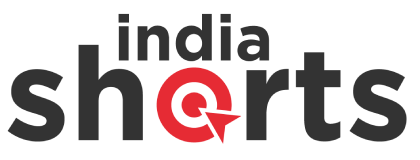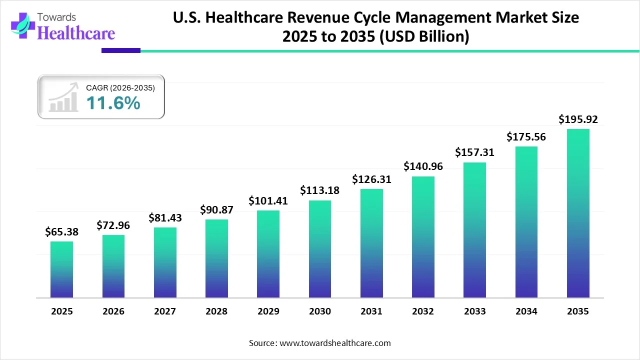The industry currently witnesses a dynamic shift where health-conscious consumers demand functional benefits beyond mere calorie reduction. Manufacturers aggressively innovate texture profiles to match full-fat experiences, while retailers optimize shelf placement to capture impulse buyers efficiently.
Chicago, Nov. 24, 2025 (GLOBE NEWSWIRE) — The global low fat cheese market was valued at US$ 121.6 billion in 2024 and is expected to reach US$ 160.1 billion by 2033, growing at a CAGR of 3.1% from 2025–2033.
Stakeholders in the low fat cheese market must recognize that vague health claims no longer satisfy consumers; specific nutrient density is the new currency. For instance, Babybel Light has set a strict calorie-controlled benchmark with exactly 50 calories per piece, while Sargento Reduced Fat Sharp Cheddar directly addresses lipid concerns by delivering just 5 grams of fat per serving. Concurrently, protein maximization is reshaping formulation strategies, evidenced by Arla Protein Lite Cheddar slices offering a substantial 20 grams of protein per serving. Similarly, Horizon Organic Lowfat Cottage Cheese provides a robust 14 grams of protein per half-cup serving. Arla’s innovation extends further, boasting 40% less fat than standard cheddar, proving that consumers demand high functionality without dietary compromise.
Request Sample Pages: https://www.astuteanalytica.com/request-sample/low-fat-cheese-market
Beyond macronutrients, sodium reduction has become a precise science within the low fat cheese market. Standard Swiss cheese naturally leads with a low 53 milligrams of sodium per ounce, setting a high bar for processed alternatives. In the cooking segment, Ricotta cheese averages 123 milligrams of sodium per half-cup serving, whereas newer low-salt white cheese formulations in 2024 have reached 400 milligrams of sodium per 30-gram serving. Manufacturers like Sargento are also fortifying these reduced-fat matrices with Vitamin A Palmitate to restore lost nutritional density. These meticulous specifications highlight a shift where every milligram counts in the consumer’s decision-making process.
Key Findings in Low Fat Cheese Market
| Market Forecast (2033) | US$ 160.1 billion |
| CAGR | 3.1% |
| Largest Region (2025) | Europe (35.46%) |
| By Product Type | Ricotta Cheese (34.52%) |
| By Distribution | Retail Distribution (53.16%) |
| Top Drivers |
|
| Top Trends |
|
| Top Challenges |
|
Global Production Capabilities are Shaping Supply Chain Availability
Supply volume acts as the backbone of the growing low fat cheese market, with global cheese production forecast to reach a massive 22.55 million metric tons in the 2024/2025 marketing year. Within the United States, total cheese production was projected to hit 6.55 million metric tons in 2024, providing ample base material for nutritional modification. Specifically, Italian-type cheese production—critical for low-fat mozzarella variants—totaled 499 million pounds in August 2024 alone. Notably, US Mozzarella production accounts for 79.5% of the total Italian cheese category, significantly outpacing American-type cheese production, which totaled 478 million pounds in the same month.
Regional production hubs in the low fat cheese market are adjusting their outputs to feed this global appetite. Australia’s cheese production is projected to reach 435,000 metric tons in 2024, while New Zealand produced 400,000 tons in the 2023/2024 cycle to meet export needs. Domestically, US per capita cheese consumption reached nearly 42 pounds per person in the 2024 reporting cycle, signaling robust demand. Trends indicate that Mozzarella sticks will see the fastest segment growth through 2034, while Ricotta cheese held the largest product segment share in 2024. Such volume data confirms that the market is supported by a highly active global production network.
Inventory Deficits Signal Tightening Conditions For Market Stakeholders
Recent data suggests a tightening of supply that could increase urgency within the low fat cheese market. US natural cheese stocks in cold storage dropped by 33 million pounds in September 2024, a significant contraction relative to expectations. Furthermore, the US$A revised its August 2024 stock figures downward by 6.6 million pounds, compounding the deficit. American cheese stocks specifically fell by 29 million pounds in September 2024. These reductions imply that demand is outpacing immediate storage capabilities, creating potential pinch points for retailers seeking consistent inventory flow.
However, contrasting inventory signals present a complex landscape for buyers. Total butter stocks exceeded forecasts by 7 million pounds in September 2024, creating a divergence between fat and protein commodities. Forward-looking projections for December 2024 showed a potential 19 million pound surplus in cheese stocks, suggesting relief may be on the horizon. In related protein sectors, pork bellies stocks dropped 25% in August 2024, while overall US natural cheese supplies ended August 2024 1% lower than the previous month. Stakeholders in the low fat cheese market must navigate these mixed inventory signals to optimize procurement strategies.
Volatile Wholesale Costs are Directly Influencing Retail Margin Structures
Fluctuations in raw material costs are currently dictating the profitability of the low fat cheese market. On the Chicago Mercantile Exchange, Cheddar block prices traded at US$ 1.79 per pound for the week ending November 15, 2025, showing distinct volatility compared to the US$ 1.50 per pound recorded in January 2024. Meanwhile, Cheddar barrel prices reached US$ 2.005 per pound in August 2024, creating an unusual dynamic where processing cheese cost more than blocks. The price gap between block and barrel cheese stood at 4.75 cents in August 2024, a metric that processors watch closely when calculating margins for shredded low-fat blends.
International auctions reflect similarly high valuations for key ingredients. Global Cheddar cheese prices at the Global Dairy Trade auction averaged US$ 4,973 per metric ton in November 2024, while Mozzarella prices averaged US$ 4,607 per metric ton. Additionally, Dry whey prices—often used in protein fortification—averaged 62.6 cents per pound in November 2025. These input costs force manufacturers in the low fat cheese market to balance premium pricing with competitive value propositions. Rising wholesale indices suggest that cost containment will remain a primary challenge for the remainder of the fiscal year.
Premium Retail Pricing Reflects Strong Demand For Healthy Variants
Retailers are successfully maintaining premium price points, validating the value-add nature of the low fat cheese market. Horizon Organic Lowfat Cottage Cheese, for example, retails for US$ 6.49 per 16-ounce tub, positioning it as a high-tier option. In the snacking aisle, Babybel Reduced Fat commands approximately US$ 4.99 at major US retailers, while Knudsen Lowfat Cottage Cheese holds a similar price point of US$ 4.99 for a 16-ounce container. These consistent price floors indicate that health-conscious consumers are willing to absorb higher costs for perceived nutritional benefits.
Convenience formats further enhance margin potential for retailers in the low fat cheese market. Sargento Balanced Breaks retail for US$ 4.99 per 3-pack unit, capitalizing on the intersection of health and portability. Similarly, Frigo Cheese Heads in the string cheese segment retail for US$ 6.49 for a 10-ounce pack. Even in the meal category, Amy’s Kitchen Light in Sodium Macaroni & Cheese retails for US$ 3.79 per 9-ounce package, while Organic Valley 2% Milk—a key input proxy—retails for US$ 5.99 per gallon. These figures confirm that the market supports robust pricing structures across diverse product categories.
Expanding International Trade Volumes are Reshaping Export Demand Channels in Low Fat Cheese Market
Export markets are absorbing a significant portion of production, acting as a vital release valve for the market. US cheese exports totaled 42,459 metric tons in August 2024 alone. Impressively, cumulative US cheese exports for the first eight months of 2024 reached roughly 60,146 metric tons above the previous year’s baseline. Mexico remains a primary partner, with exports increasing by 2,256 metric tons in August 2024. Within that flow, exports of “Other Cheese”—a category often housing processed and low-fat blends—rose by 1,942 metric tons, highlighting specific demand for versatile formulations.
Global appetite extends beyond North America low fat cheese market, influencing long-term trade forecasts. US cheese exports to the MENA region increased by 1,245 metric tons in August 2024. Looking ahead, Japan is forecast to import an additional 6,886 metric tons of US cheddar-type cheeses between 2025 and 2026, adding to a total import volume that exceeded 251,913 metric tons. However, shifts are evident; Cheddar exports to Japan fell by 1,742 metric tons in August 2024, suggesting a pivot toward other varieties. With total US cheese exports for 2024 forecast to hit a record 508,808 metric tons, international trade remains a pillar of the market.
Major Market Players Face Intense Competition From Private Label
The competitive landscape of the low fat cheese market is defined by a battle between legacy brands and store-brand dominance. Sargento Foods remains a powerhouse, reporting peak annual revenue of US$ 1.3 billion in 2024, with shredded unit sales recorded at 116 million units. However, Kraft continues to lead in volume, with shredded unit sales reaching 266 million units. Despite these massive branded numbers, Private Label shredded cheese—often the entry point for budget-conscious low-fat shoppers—achieved a staggering 1.25 billion unit sales, dwarfing individual branded competitors.
Smaller segments show equally fierce positioning battles. Tillamook recorded 42 million unit sales in the natural cheese category, carving out a premium niche. In the shelf-stable arena, Sargento holds the position of the No. 8 seller, while Mondelēz International saw cheese unit sales of 13 million. These metrics illustrate that while brand equity drives revenue, volume in the low fat cheese market is heavily swayed by private label accessibility. Brands must therefore innovate relentlessly to justify their price premiums against generic alternatives.
Looking for Country-Level or Section-Wise Data? Customize This Report: https://www.astuteanalytica.com/report-walkthrough/low-fat-cheese-market
Product Innovations and Dietary Inclusivity Define Future Growth Vectors
Innovation in 2024 has focused heavily on “permissible indulgence” and dietary inclusivity. Arla Foods launched a new line of organic low-fat cottage cheese in February 2024, catering to the clean-label demographic. Similarly, Saputo Inc. introduced LightLife Mozzarella Shreds for foodservice, while Horizon Organic introduced a new organic low-fat cheese product in April 2024. These launches underscore the industry’s pivot toward functional, high-quality offerings that elevate the perception of the low fat cheese market. Europe’s market value of US$ 38.9 billion in 2024 further validates the scale of this opportunity.
Beyond traditional dairy, allergen-free attributes are expanding the addressable market. Babybel Plant-Based contains 0 grams of lactose, appealing to those with sensitivities, while Bel Brands expanded its dairy-free distribution to major retailers like Costco in 2024. Ricotta cheese held the largest product segment share in 2024, driven by its versatility in healthy cooking. Furthermore, gluten-free and lactose-free claims were key drivers in Arla’s 2024 product expansions. These diverse innovation vectors ensure that the low fat cheese market remains dynamic and relevant to evolving consumer lifestyles.
Low Fat Cheese Market Major Players:
- Kraft Hein
- Dairy Farmers of America
- Lactalis
- Arla Foods
- Bel Group
- Fonterra
- Saputo
- Murray Goulburn
- FrieslandCampina
- Other Prominent Players
Key Market Segmentation:
By Product
- Ricotta
- Feta
- Hard
- Mozzarella Sticks
By Distribution Channel
- Retail
- Food Services
By Region
- North America
- Europe
- Asia Pacific
- Middle East and Africa
- South America
Need a Detailed Walkthrough of the Report? Request a Live Session: https://www.astuteanalytica.com/report-walkthrough/low-fat-cheese-market
About Astute Analytica
Astute Analytica is a global market research and advisory firm providing data-driven insights across industries such as technology, healthcare, chemicals, semiconductors, FMCG, and more. We publish multiple reports daily, equipping businesses with the intelligence they need to navigate market trends, emerging opportunities, competitive landscapes, and technological advancements.
With a team of experienced business analysts, economists, and industry experts, we deliver accurate, in-depth, and actionable research tailored to meet the strategic needs of our clients. At Astute Analytica, our clients come first, and we are committed to delivering cost-effective, high-value research solutions that drive success in an evolving marketplace.
Contact Us:
Astute Analytica
Phone: +1-888 429 6757 (US Toll Free); +91-0120- 4483891 (Rest of the World)
For Sales Enquiries: sales@astuteanalytica.com
Website: https://www.astuteanalytica.com/
Follow us on: LinkedIn | Twitter | YouTube
CONTACT: Contact Us: Astute Analytica Phone: +1-888 429 6757 (US Toll Free); +91-0120- 4483891 (Rest of the World) For Sales Enquiries: sales@astuteanalytica.com Website: https://www.astuteanalytica.com/

Disclaimer: The above press release comes to you under an arrangement with GlobeNewswire. IndiaShorts takes no editorial responsibility for the same.



